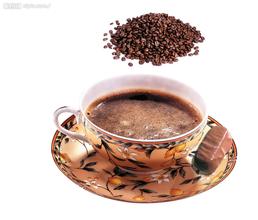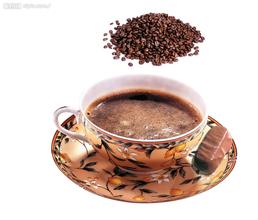Introduction of Columbia Snow Mountain Coffee Bean with characteristic Flavor, Taste, Grinding and Calibration method
Introduction of Columbia Snow Mountain Coffee Bean with characteristic Flavor, Taste, Grinding and Calibration method
Colombia used to be dominated by commercial beans. In 1990-2000, boutique beans accounted for only 5% of the country's coffee production. after the millennium, FNC explored the business opportunities and potential of boutique coffee and strongly instructed coffee farmers to switch to the more profitable boutique coffee bean planting industry. At present, FNC certified boutique coffee accounts for 30% of the country's total coffee output, which shows the authorities' ambition to promote boutique beans.
Colombian coffee is located in the Andes, where the mild and humid climate and good rainfall make it very suitable for coffee growth. according to its geographical location, Colombian coffee is divided into three producing areas: northern, central and southern. Colombia's boutique bean producing areas are mainly located in the south-central region. Among them, there are six high-quality coffee producing areas in Colombia, Sierra Nevada, Santander, Cauca, Huila, Narino and Paisaje cultural cafetero.
In this issue, we will first introduce the Sierra Nevada producing areas, Santander producing areas and Cauca producing areas to you in detail. In the next issue, we will introduce the next three producing areas. Columbia Coffee (Cafe de Colombia) is one of the few individual coffees sold under the name of a country in the world, and it is also a successful example of the successful combination of geographical indications and brand image.
In December 2004, the Colombian Coffee producers Association (FNC) applied to the Government of Colombia for registration of the geographical indication "Caf é de Colombia" (Colombian Coffee). Three months later, the Colombian government approved "Caf é de Colombia" as "appellation of origin-geographical indication (D.O.-G.I.)". As a result, this logo has also become the official symbol of the Colombian Coffee producers Association. The National Coffee producers Association of Colombia (FNC) is acutely aware of the importance of naming of origin and geographical indications (D.O.-G.I.). Naming of origin (Denominaci ó n de Origen) is a system of protection of appellations of origin, which is mainly used to protect the quality and credibility of agricultural products. This law ensures that only food actually produced in a certain region can be marketed in the name of the region in order to protect the reputation of the food producing area, eliminate unfair competition and prevent consumers from buying food from non-real producing areas.

Important Notice :
前街咖啡 FrontStreet Coffee has moved to new addredd:
FrontStreet Coffee Address: 315,Donghua East Road,GuangZhou
Tel:020 38364473
- Prev

Comparison between Iron pickup and bourbon the flavor and taste of Yunnan iron pickup coffee beans
Comparison between iron pickup and bourbon the flavor characteristics of Yunnan iron pickup Typica: the oldest native variety in Ethiopia and southeastern Sudan, all Arabica are derived from Tibica. The flavor is elegant, but the physique is weak, the disease resistance is poor, the fruit yield is less. Excellent ones such as Jamaica Blue Mountain, Sumatra Manning, Hawaii Kona, etc.
- Next

Hartmann Rose Summer Coffee Bean Price and Flavor description introduction of Grinding scale varieties by Taste treatment
Hartmann Rose Summer Coffee Bean Price and Flavor description Taste treatment Grinding scale Variety introduction (Floral,sweetorange,pineapple,honey,vanilla,livelyaromas. Floral, sweet orange, pineapple, pineapple, vanilla, lively fragrance) the story of several contestants using beans Hartman in Panama's famous producing areas is as legendary as its coffee. Hart.
Related
- Detailed explanation of Jadeite planting Land in Panamanian Jadeite Manor introduction to the grading system of Jadeite competitive bidding, Red bid, Green bid and Rose Summer
- Story of Coffee planting in Brenka region of Costa Rica Stonehenge Manor anaerobic heavy honey treatment of flavor mouth
- What's on the barrel of Blue Mountain Coffee beans?
- Can American coffee also pull flowers? How to use hot American style to pull out a good-looking pattern?
- Can you make a cold extract with coffee beans? What is the right proportion for cold-extracted coffee formula?
- Indonesian PWN Gold Mandrine Coffee Origin Features Flavor How to Chong? Mandolin coffee is American.
- A brief introduction to the flavor characteristics of Brazilian yellow bourbon coffee beans
- What is the effect of different water quality on the flavor of cold-extracted coffee? What kind of water is best for brewing coffee?
- Why do you think of Rose Summer whenever you mention Panamanian coffee?
- Introduction to the characteristics of authentic blue mountain coffee bean producing areas? What is the CIB Coffee Authority in Jamaica?

